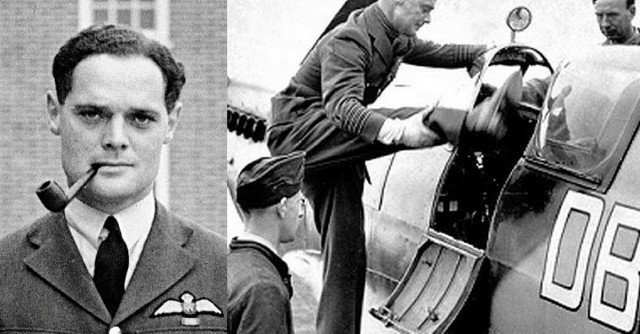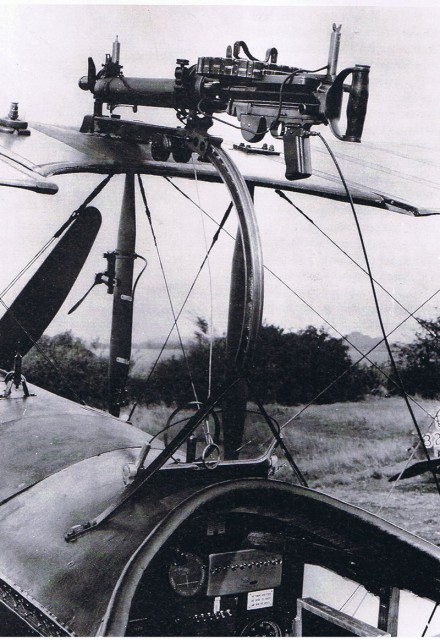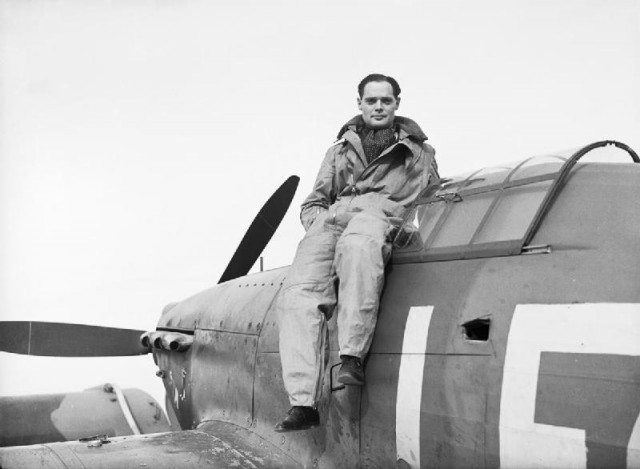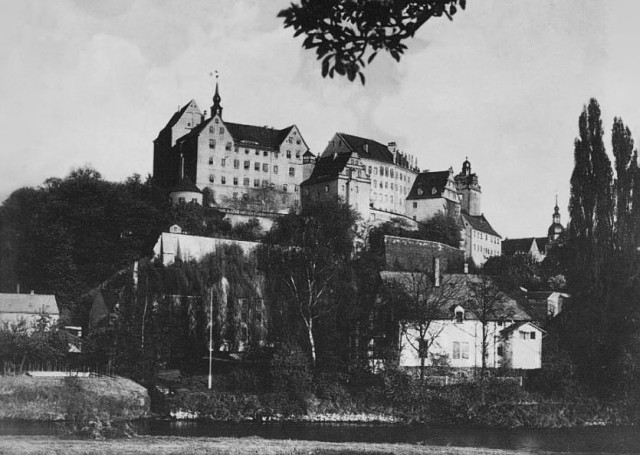Missing both Legs, This RAF Fighter Ace Took out 22 Germans Planes, Then Escaped Multiple POW Camps
SHARES
| FacebookTwitter |

Life with amputated legs can prove difficult for even the most mundane of tasks require extra effort. But trying taking on the German Luftwaffe and Prisoner of War camps without any legs and then we can talk about what exactly it takes to overcome adversity.
Sir Douglas Robert Bader was an RAF pilot who lost both legs in a 1931 flying accident where his wing touched the ground while conducting flying acrobatics. One leg was amputated above the knee and the other below which one would have assumed would have ended his career as a pilot.
However, this pilot would overcome adversity and doubts about his capability on his way to downing 22 German aircraft as a pilot and as a German POW conduct so many escape attempts that the Germans threatened to take away his prosthetic legs.
Winning Over the Royal Air Force Brass
Sir Douglas Robert Bader was born in 1910 London and would prove early his life both an exceptional athletic ability combined with a tendency to bend the rules when necessary or just when he pleased.He excelled at all sports to include Rugby growing up, and when he joined the RAF as an officer candidate in 1928, he was almost kicked out after too many late nights out. He became a commissioned pilot in 1930 where he would frustrate the RAF brass by conducting various acrobatic moves at low altitudes in his bi-plane.

However, as the winds of war began to gather in Europe, the RAF was more open to Bader’s repeated requests but only offered him ground jobs. But with a little help from high-ranking officials, he was finally given his opportunity to return to the skies, missing legs and all.
In late 1939, Bader would conduct flight tests on various plane models before being assigned to the No. 19 RAF Squadron where he would get a chance to fly the famed and beloved Spitfire. He would conduct various training flights in the Spitfire between January and May of 1940 where he demonstrated an ability to excel at high-speed maneuvers.
Many thought it was his ability to withstand high G turns due to his missing legs. When most pilots conducted such extreme turns, they might black out as the blood from the brain rushes to the extremities, primarily the legs. But missing his, Bader could stay conscious longer and make sharper and faster turns than his opponents.
Time for Action
Not only would Bader’s missing legs prove an asset, but so would his fearless and audacious attitude in the face of danger. Sure that philosophy might have taken his legs in 1931, but such an approach to life was often helpful in war. He would first see action in June of 1940 as his squadron was tasked with providing air cover at Dunkirk to support the evacuation of British troops after the Germans began their blitz through France.
The RAF brass considered pulling Bader from operational duty due to his status and insistence on inviting danger, but it doesn’t appear anyone wanted to have that conversation with the outspoken pilot. Between March and August of 1941, Bader conducted 62 fighter missions over France with unparalleled success. However, his streak of luck would come to an end on August 9th, 1941.
A POW Who Wouldn’t Stay Put
In August of 1941, Bader was conducting a mission over France when his plane was taken out. Accounts conflict as to whether he collided with an enemy bomber was shot down by an enemy fighter, or even shot down by friendly fire. However, Bader would find himself attempting to bail out when one of his prosthetic legs became trapped in the Spitfire. Falling for some time, he eventually released the parachute where the force ripped the straps of the prosthetic leg off.On August 19th, 1941 the British parachuted down a new leg.

Once in a POW camp, he made so many escape attempts that the Germans threatened to take away his legs. He was finally sent to Colditz Castle, which was deemed to be escape proof in 1942. There he remained until the allies liberated him on April 15th, 1945.
A fascinating war experience for a man who was defiant from beginning to end and did it all missing two legs. In a final act of victory and defiance to adversity, Bader was given the honor of leading a victory flypast of 300 aircraft over London in June of 1945.
It is a story that warrants a unique place in the historical as well as for each of us to look down at our functional legs and ask what is holding us back from making our own chapter in history.
www.warhistoryonline.com

Δεν υπάρχουν σχόλια:
Δημοσίευση σχολίου